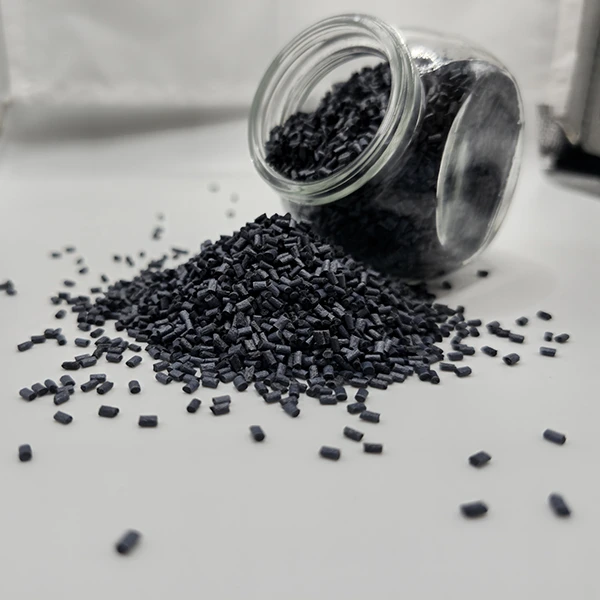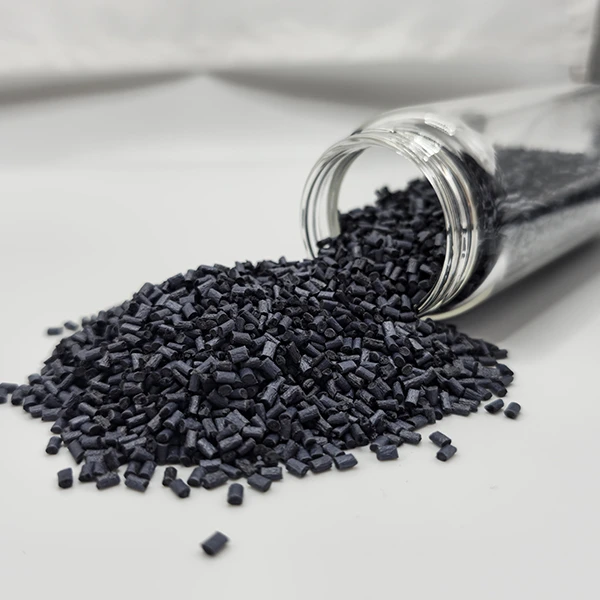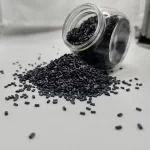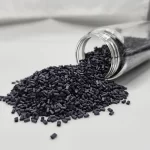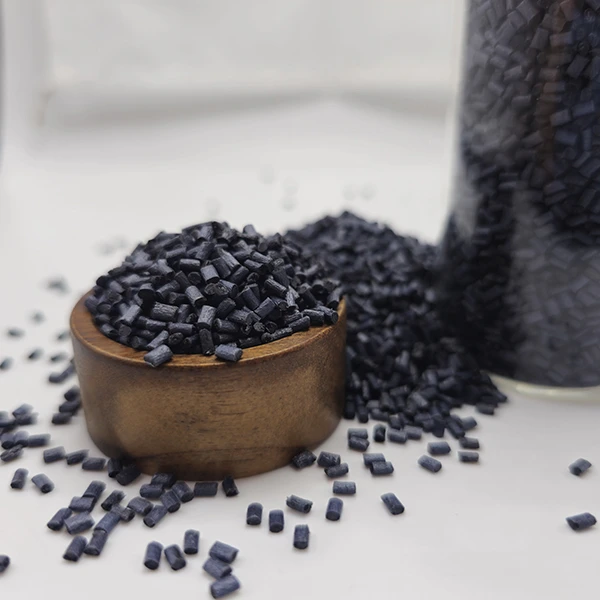
PPSU + 10% Carbon Fiber Composites PPSU CF10 Compounders
PPSU CF10 is enhanced by carbon fiber with a filling mass percentage of 10%. The composition makes it powerful. It features high strength and excellent heat resistance. Also, it shows good impact resistance and dimensional stability.
- Manufacturer: Carbon New Material
- OEM/ODM: Acceptable
- Color: Black
- Free samples: ≤10kg
- MOQ: 100kg
- Port: Xiamen
- Model Number: PPSU-CF-BCA1
- Molding Process: Injection/extrusion molding
What’s PPSU CF10?
PPSU CF10 is an outstanding high-performance thermoplastic composite material.
Its composition is unique, with the filling mass percentage of carbon fiber reaching 10%. This proportion is just right, endowing the material with excellent performance.
In terms of functional characteristics, it has high strength, and the tensile strength is significantly improved. At the same time, its good heat resistance enables it to work stably in high-temperature environments. In addition, 10%CF + PPSU also shows excellent impact resistance and dimensional stability.
Due to these powerful performances, PPSU CF10 is widely used and can be applied in fields such as aerospace, automotive manufacturing, and electronic equipment, meeting the strict requirements for high performance and reliability of materials.
PPSU CF10 in Aviation Engine Components
n the aviation field, the performance requirements for materials are extremely demanding. And PPSU CF10, a high-performance thermoplastic composite material reinforced by carbon fiber filling, is becoming an ideal choice for aviation engine components.
Take the turbine blades of the engine, for example. Traditional materials often struggle to balance high strength and high temperature resistance simultaneously. But PPSU CF10% is different. With a carbon fiber filling mass percentage of 10%, its tensile strength can reach as high as 500 MPa, and the heat distortion temperature can stabilize at around 250°C.
Once, a new type of aviation engine boldly adopted turbine blades made of PPSU CF10 produced by Carbon (Xiamen) New Material. During actual operation, the engine speed reached 15,000 revolutions per minute, and the internal temperature exceeded 1000°C. However, the turbine blades made of PPSU + CF10 not only withstood the high temperature and high pressure but were also about 30% lighter than traditional metal blades.
It is precisely because of the outstanding performance of PPSU 10%CF that it significantly reduces the weight of the engine, lowers fuel consumption, and improves the fuel economy and flight performance of the aircraft. It is believed that in the future, it will play an important role in more aviation engine components and help the aviation industry fly higher and farther!
What’s PPSU?
About Us
Integrating R&D, production, and sales, Carbon (Xiamen) New Material, supported by a professional R&D team, a modern advanced factory, and meticulous pre-sales and after-sales services, is dedicated to providing high-quality carbon fiber reinforced thermoplastics, establishing one-stop services, and presenting comprehensive solutions for CFRTP products.

Our Laboratory
1. Performance Evaluation Equipment Featuring versatile material testing machines, dynamic mechanical analyzers (DMA), thermogravimetric analyzers (TGA), differential scanning calorimeters (DSC), thermal conductivity meters, and electrical property analyzers, this equipment is designed to thoroughly assess the diverse properties of materials. 2. Microstructural Analysis Instruments Including scanning electron microscopes (SEM), transmission electron microscopes (TEM), and X-ray diffraction (XRD) analyzers, these instruments are used for examining and analyzing the microstructure and phase composition of materials.

R&D Team
There is a group of outstanding R&D personnel in our company. They are the drivers of innovation and explorers of technology. They have many years of research experience in materials science and are good at the composite research of polymer materials and carbon materials. With their professional knowledge, innovative spirit and teamwork, these R&D personnel continuously promote the development of Carbon (Xiamen) New Material, bringing new possibilities and breakthroughs to the industry.

Frequently Asked Questions
Carbon (Xiamen) New Material Co., Ltd. aims to provide buyers with "one-stop" worry-free high-quality services. Here you can find all information about carbon fiber engineering plastics. If you still have questions, please send us an email for consultation!
-
How can I contact the manufacturer of a product that interests me?
When you find a product you are interested in, you can contact the manufacturer directly by sending an email and we will get back to you as soon as possible.
-
How do I find the products that interest me?
All you need to do is enter the keyword, product name in the search window and press the Enter key on your keyboard. Your search results page will then be displayed. You can also search within the product category pages on the home page. Each category is divided into subcategories, allowing you to refine your search and find products that interest you.
-
Where will I find a buying guide?
Please contact our after-sales service directly and we will provide you with a comprehensive operating guide.
-
What are CF Reinforced Thermoplastic Composites?
CF Reinforced Thermoplastic Composites are materials where carbon fibers are incorporated into a thermoplastic matrix. They combine the strength and stiffness of carbon fibers with the processability and recyclability of thermoplastics. For instance, they are used in automotive parts like bumper beams.
-
What are the benefits of CF Reinforced Thermoplastic Composites over traditional composites?
The key benefits include faster production cycles, easier recyclability, and better impact resistance. They also offer design flexibility. An example is in the manufacturing of consumer electronics casings where complex shapes can be achieved more easily.
-
How are CF Reinforced Thermoplastic Composites processed?
Common processing methods include injection molding, extrusion, and compression molding. Injection molding is widely used for mass production. For example, in the production of small components for the medical industry.
-
What industries use CF Reinforced Thermoplastic Composites?
They are utilized in aerospace, automotive, medical, and sports equipment industries. In aerospace, they can be found in interior components. In the medical field, they might be used in prosthetics.
-
How does the carbon fiber content affect the properties of the composites?
Higher carbon fiber content generally leads to increased strength and stiffness but may reduce ductility. A moderate content is often balanced for specific applications. For example, a higher content might be preferred in structural parts of a race car.
-
What are the challenges in using CF Reinforced Thermoplastic Composites?
Challenges include higher material costs, complex processing equipment requirements, and ensuring uniform fiber dispersion. Issues with adhesion between the fibers and the matrix can also arise. An example is in achieving consistent quality in large-scale production.







